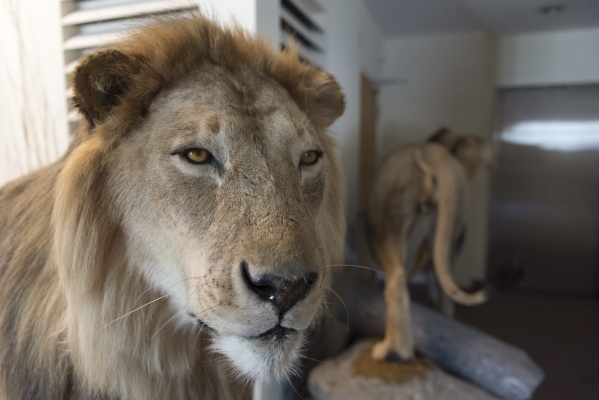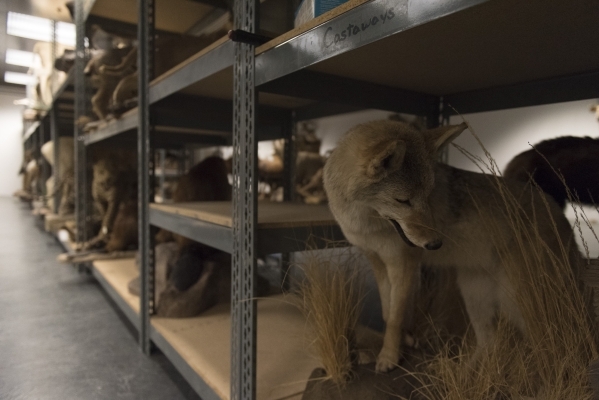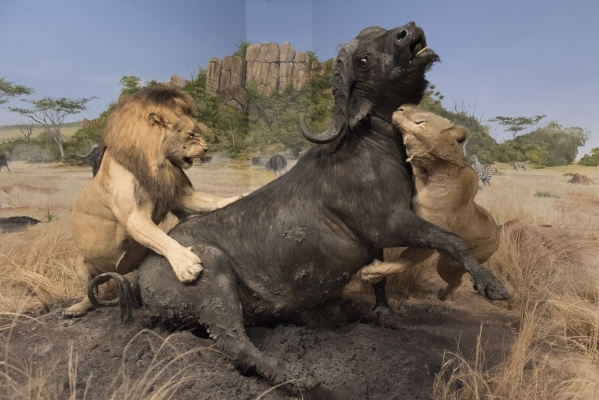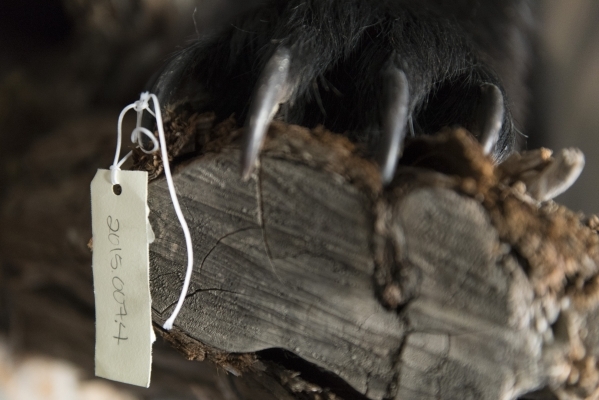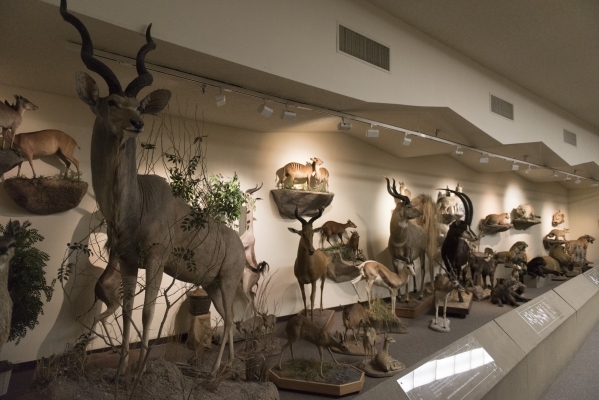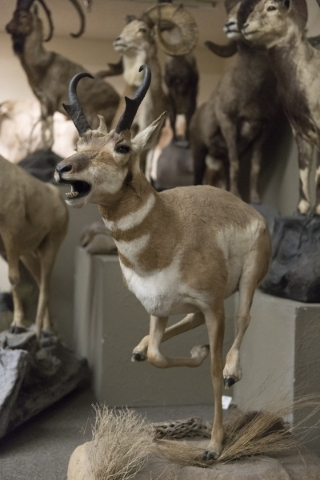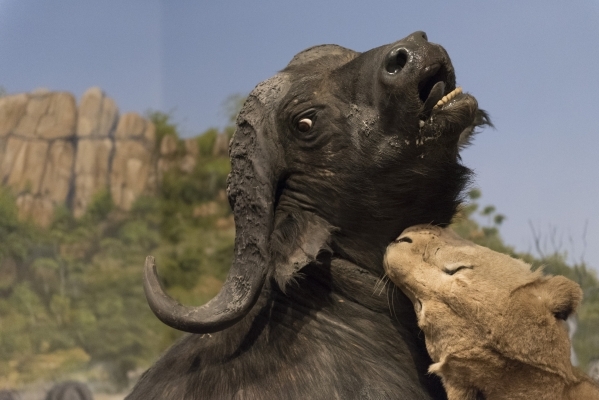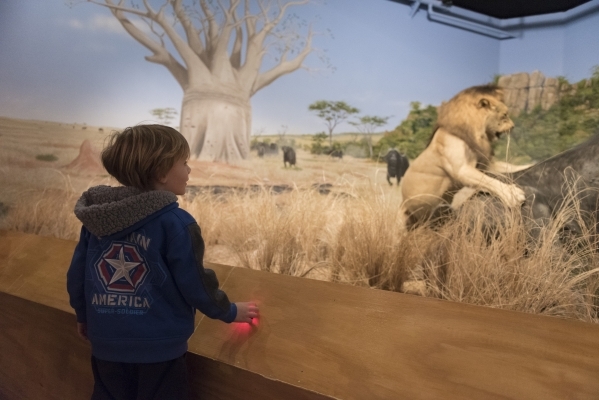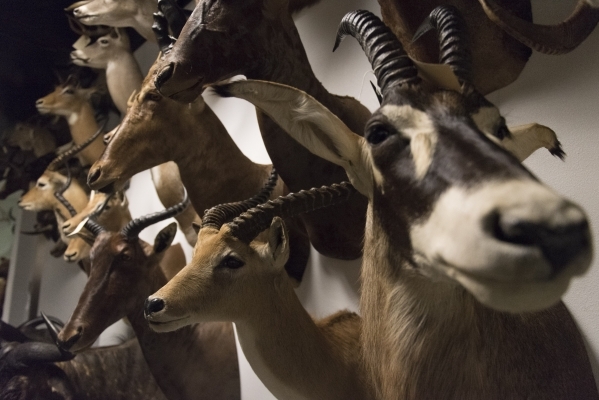Las Vegas museum turns hunting trophies into educational pieces
It's a common story: A person decides to move, scale back all of the stuff they've accumulated over the years and get rid of things that they're no longer as interested in, like that huge stuffed animal collection. In the case of casino developer and town namesake Gary E. Primm, the stuffed animals are nearly 100 exotic and domestic species he has bagged over 20 years and donated to the Las Vegas Natural History Museum.
Stuffed is an inexact term: The animals were carefully mounted over a form to reproduce the look of the living animal, often in action.
"The animals we already had on display were museum quality," said Chris Palladino, communications and development officer for the Las Vegas Natural History Museum, 900 Las Vegas Blvd. North. "The ones we received from Gary Primm were beyond museum quality."
The collection, valued at $650,000, more than doubles the museum's collection of stuffed and mounted animals. Prior to the Primm donation, almost all of the animals on display had been donated more than 20 years earlier by Bruno Scherrer, a founding member of Safari Club International. Prior to that, most of the mounted animal displays were on loan from other museums.
The staff is aware of the controversy of big game hunting in the modern era and has come to terms with it.
"We, as an organization, don't condone the killing of animals just for the killing of animals, but organizations like the Safari Club do a great deal of conservation work now also," Palladino said. "Our goal is to change them from a trophy to an educational piece."
The animals were previously on display at Primm's east valley home near Sunset Park. Only a handful of people saw them in a large trophy room on the 10-acre ranch.
"It was an impressive display, but here the public will be able to enjoy them," Palladino said. "We've got them displayed in a larger space here, and they can be seen in the context of the life of the animals and their habitat."
One of the programs Palladino is particularly proud of is Open Door, a program that pays for buses to bring Title 1 students to the museum.
"A lot of those kids have never been to a museum before," Palladino said. "I've heard 13- and 14-year-old kids say they didn't realize giraffes were so big."
The size of the displays was one of the challenges presented by moving them. Some of the displays had to be dismantled to get through doors.
"It's always interesting to move a 16-foot giraffe," Palladino said.
Much of the collection is in storage at the museum's nearby annex, awaiting installation or decisions about their final destination.
"Some of the collection is just mounted heads, which typically we wouldn't display because it has less scientific interest," Palladino said. "You can't just put these in a regular room because it has to be curated. It has to have the right humidity and the right temperature. They're works of art when you really look at it."
Taking care of the collection in storage falls to the museum's collections manager, Melanie Coffee.
"This is really my expertise," Coffee said. "The funny thing is that I'm a vegetarian, but I really like taking care of these."
A large portion of the new collection is displayed by genus in a room near the front of the museum. Some of the most spectacular pieces are on display in the African Room, which required a major makeover to accommodate the new pieces.
"Originally, it was West Africa, but we needed to change it to South Africa, and that meant repainting most of the murals," Palladino said. "It was worth it to highlight things like the Cape buffalo. You don't see a lot of action shots like this."
The Cape buffalo includes two lions attacking the buffalo. Often, mounted animal displays are placed in static poses, standing or at rest. The lions and buffalo look like a freeze-frame shot from a nature documentary just before the lions enjoy a hearty repast. Nearby, a display of a leopard and its kill is also unusual for a display.
"The leopard with the deer up in the tree is amazing," Palladino said. "In the wild, that's what they do. They bring their kill up into a tree."
The quarter-century-old museum is in transition, having about reached its capacity for educational displays at its current location. Staff is in the process of preparing to move the collection across the street, after the Las Vegas Library, 833 Las Vegas Blvd. North, vacates the space.
"We don't have a timeline yet, but we're really looking forward to getting over there and spreading out," Palladino said.
The Las Vegas Natural History Museum is open from 9 a.m. to 4 p.m. daily; admission is $5 to $10, with children 2 or younger free. For more information on the museum and the updated Africa exhibit, call 702-384-3466 or visit lvnhm.org.
— To reach East Valley View reporter F. Andrew Taylor, email ataylor@viewnews.com or call 702-380-4532.
If you go
Las Vegas Natural History Museum
900 Las Vegas Blvd. North
Open: 9 a.m. to 4 p.m. daily
Admission: $5 to $10, with children 2 or younger free
702-384-3466
lvnhm.org





